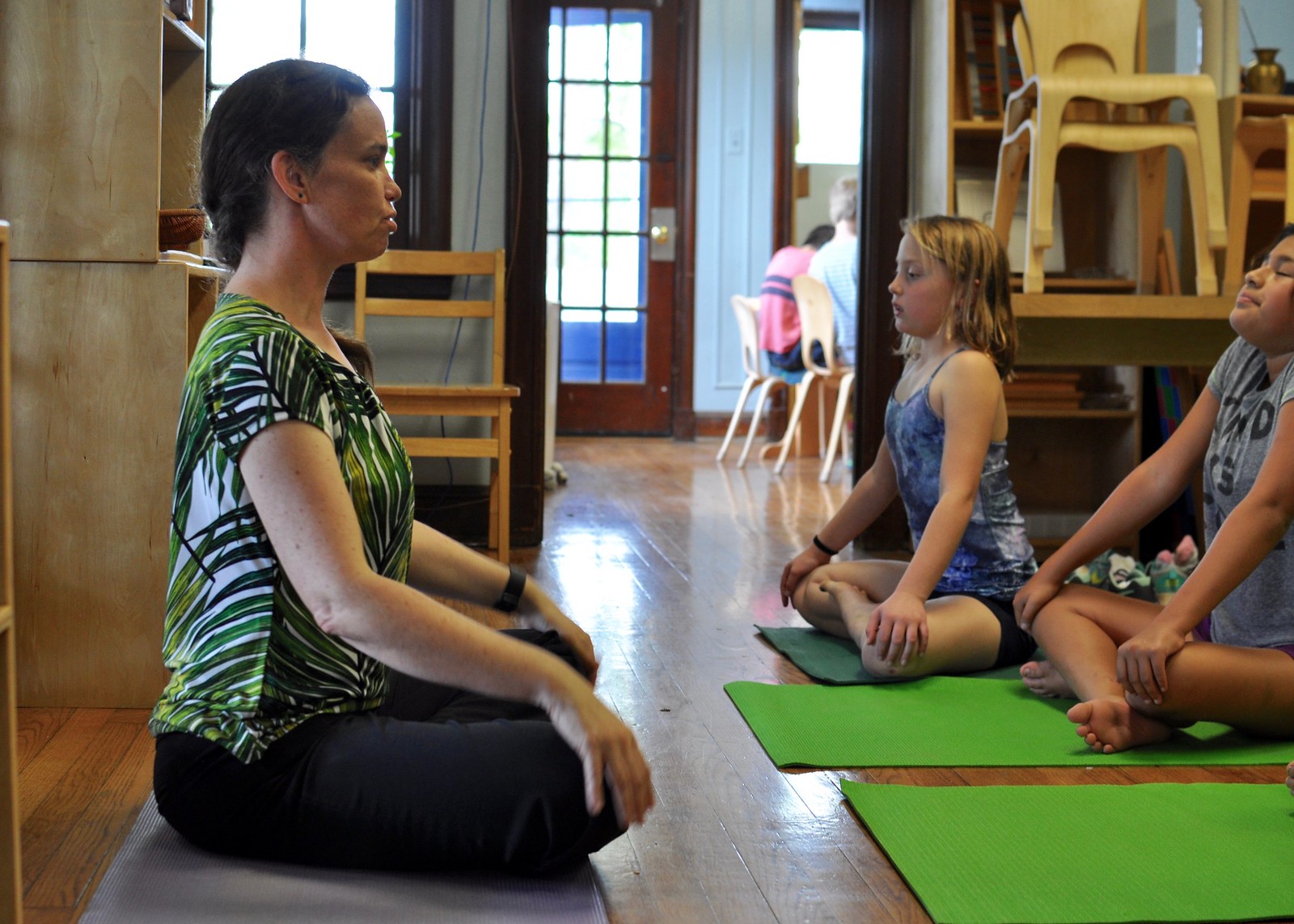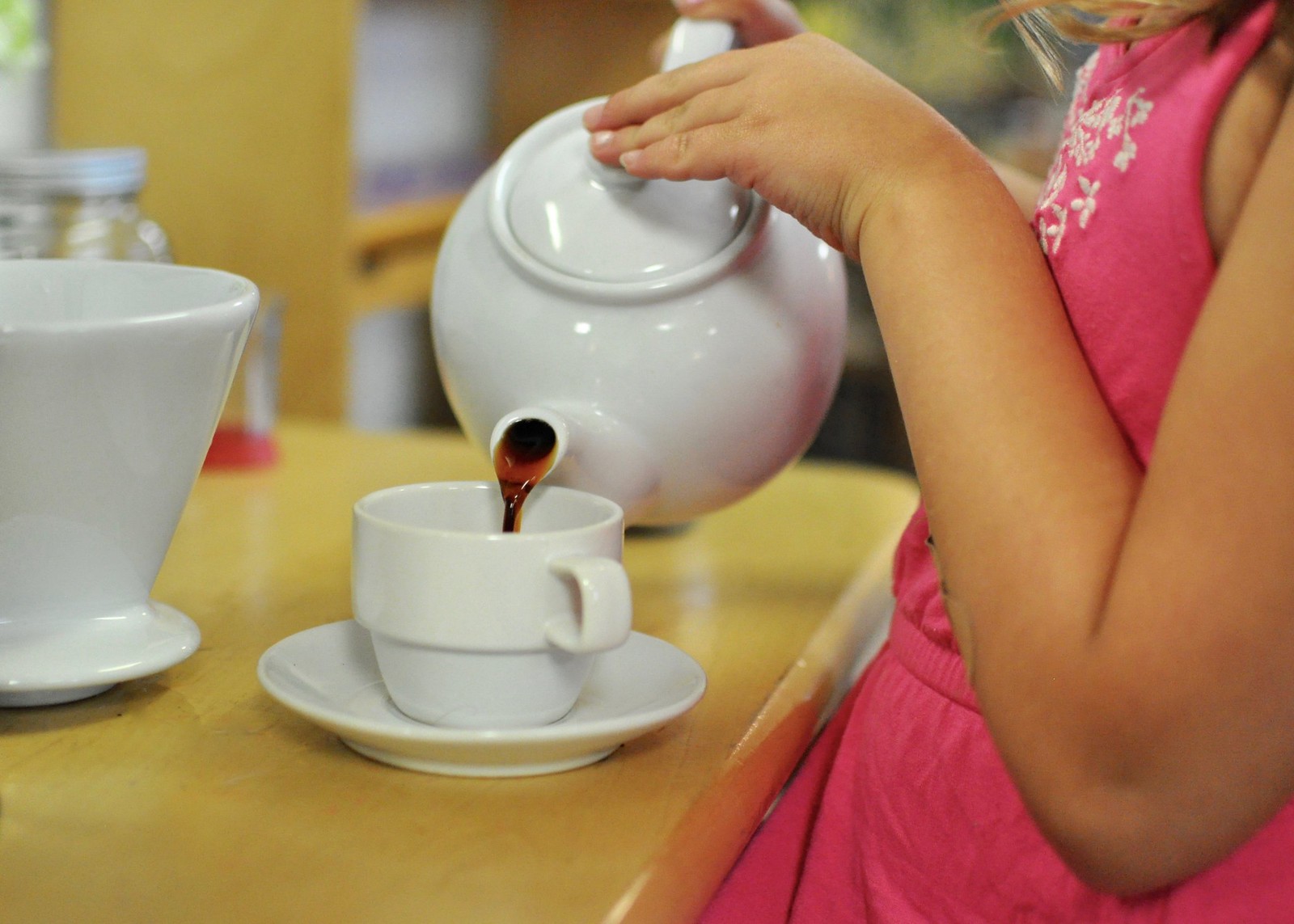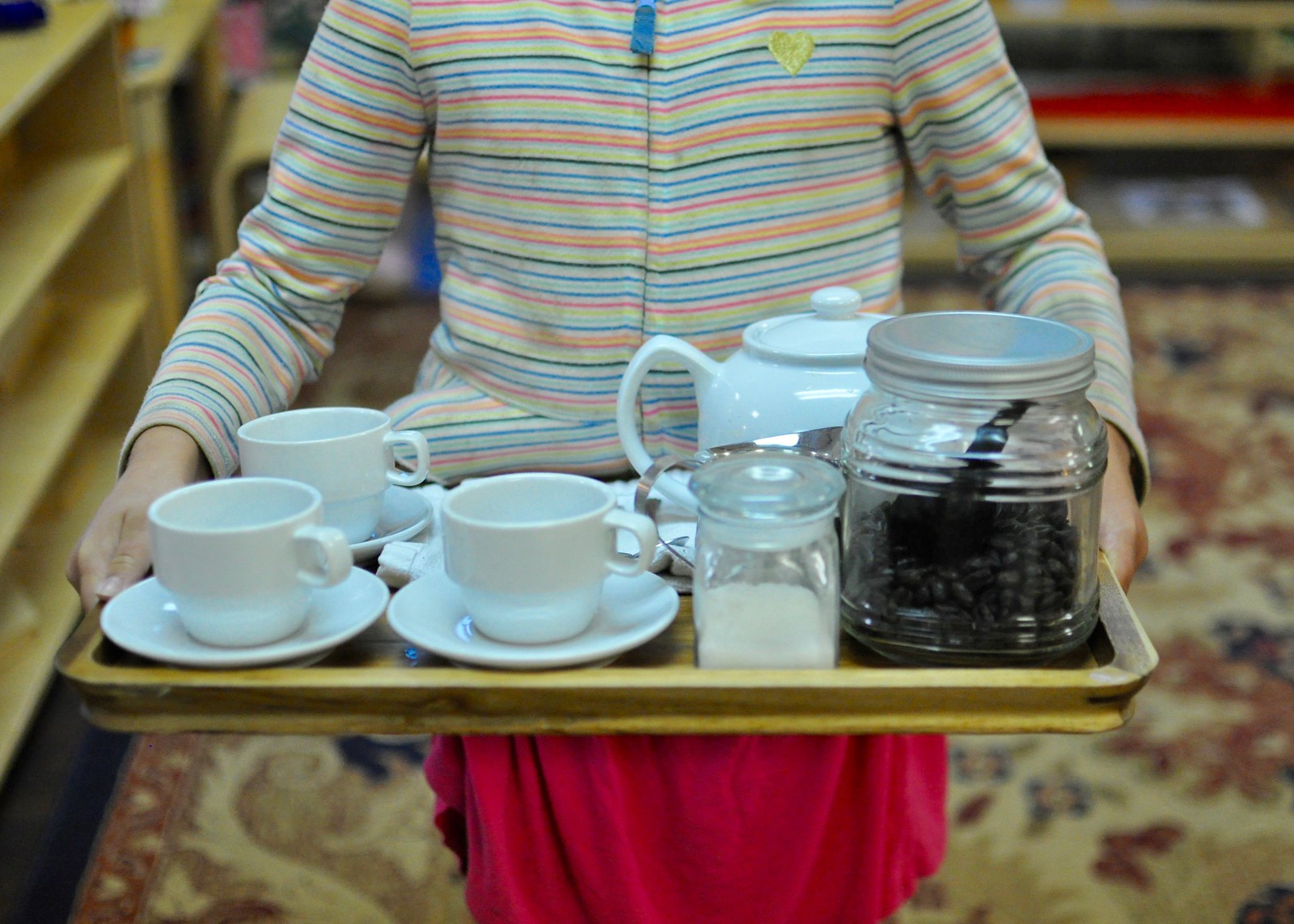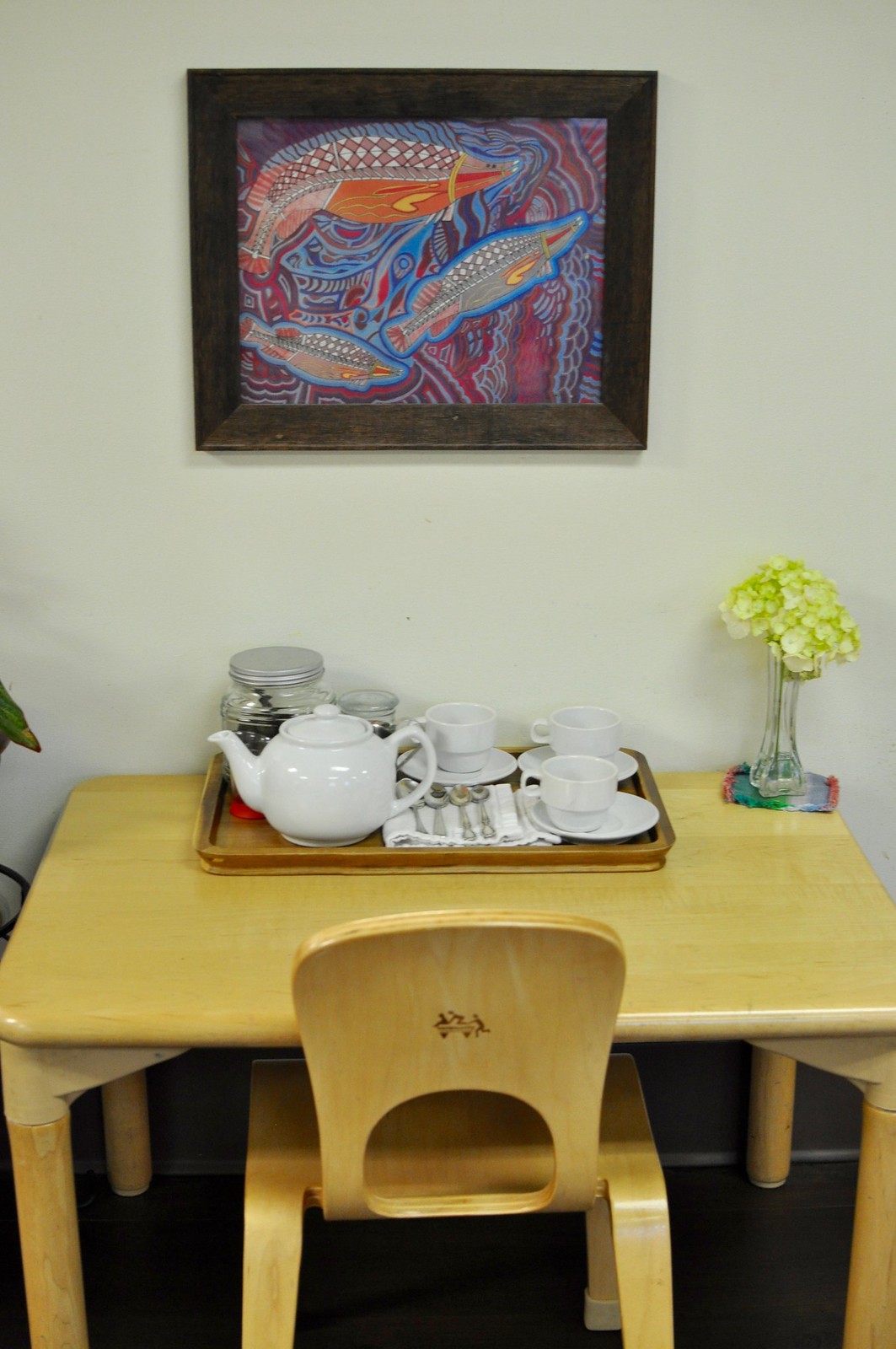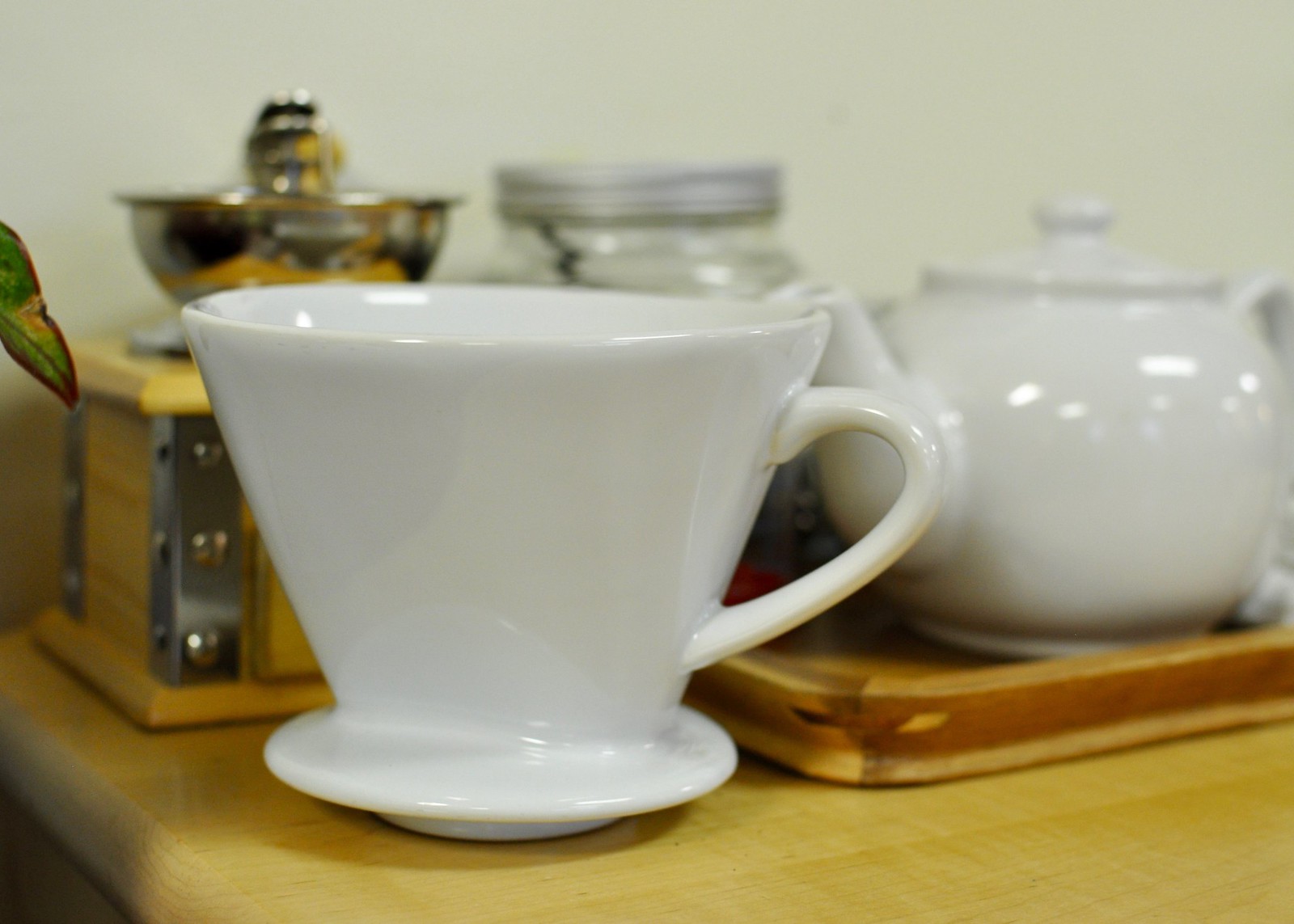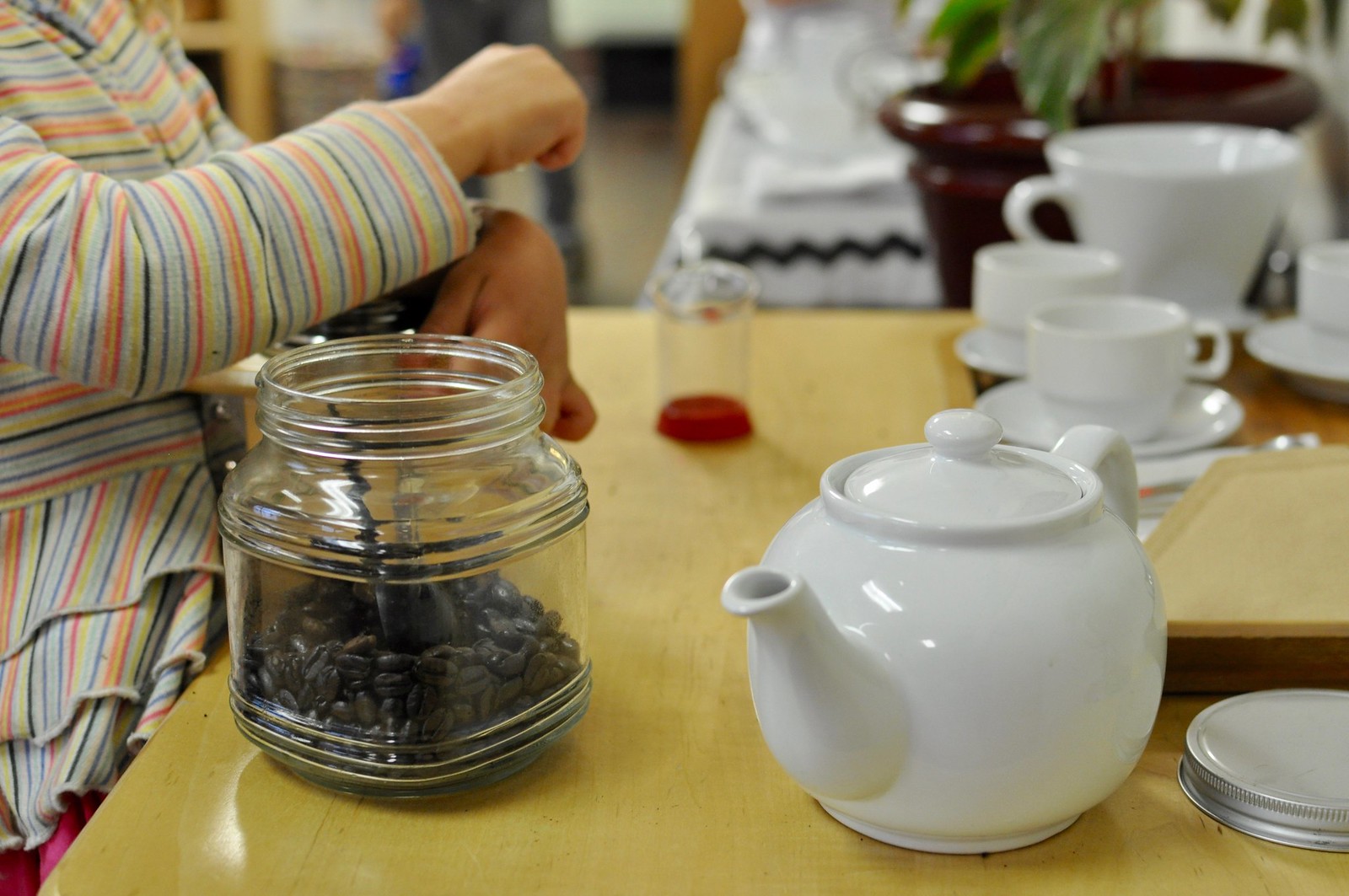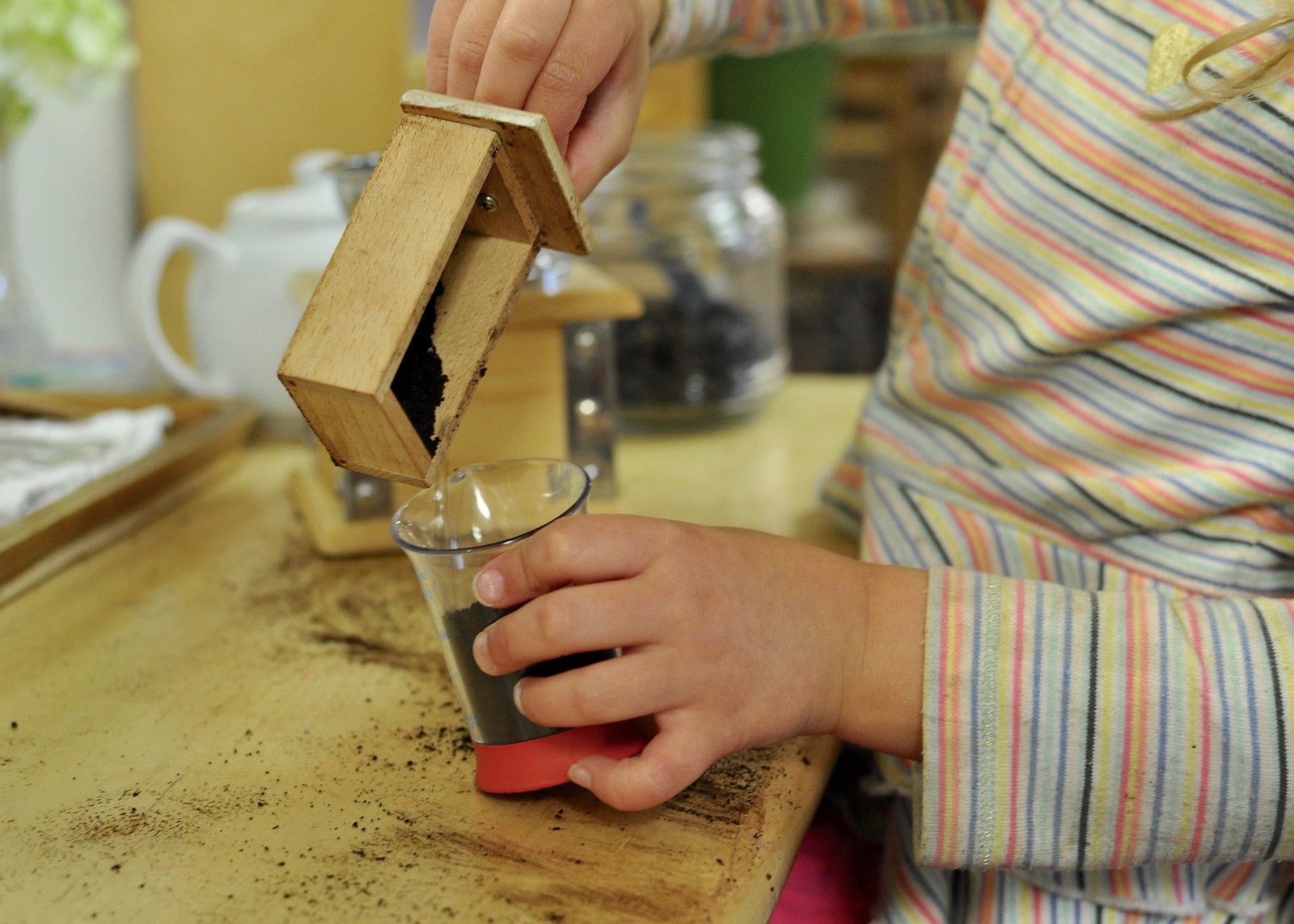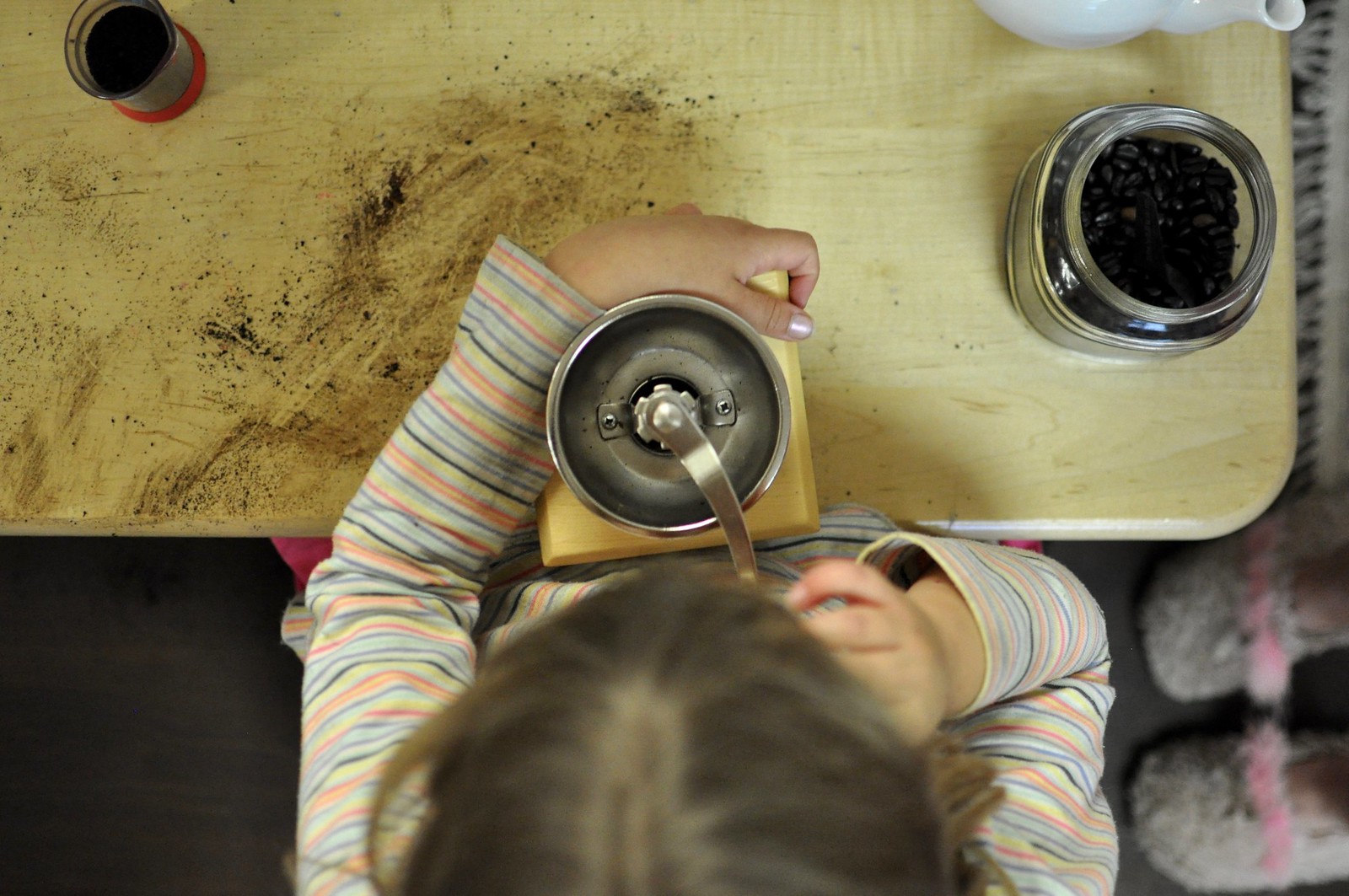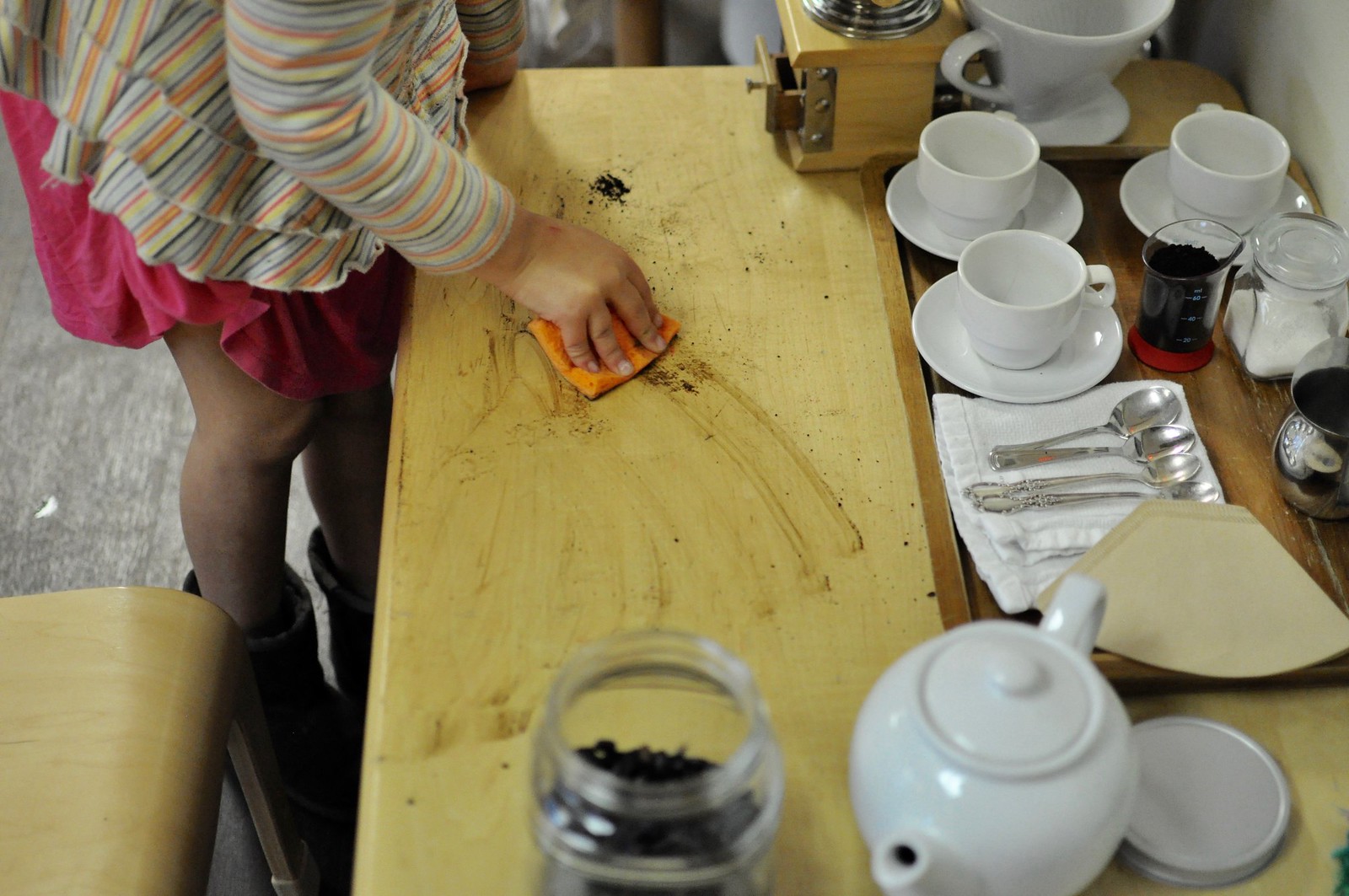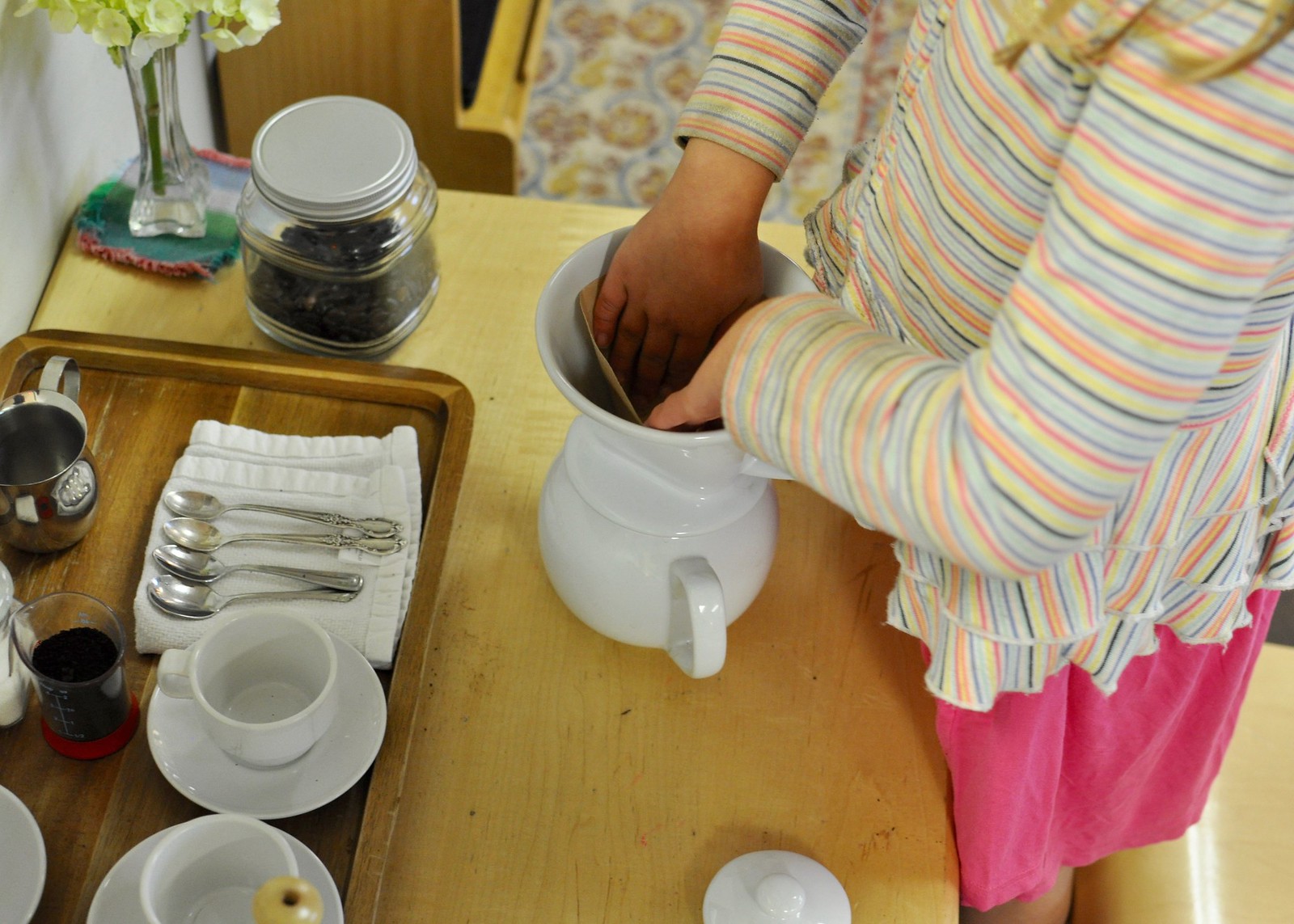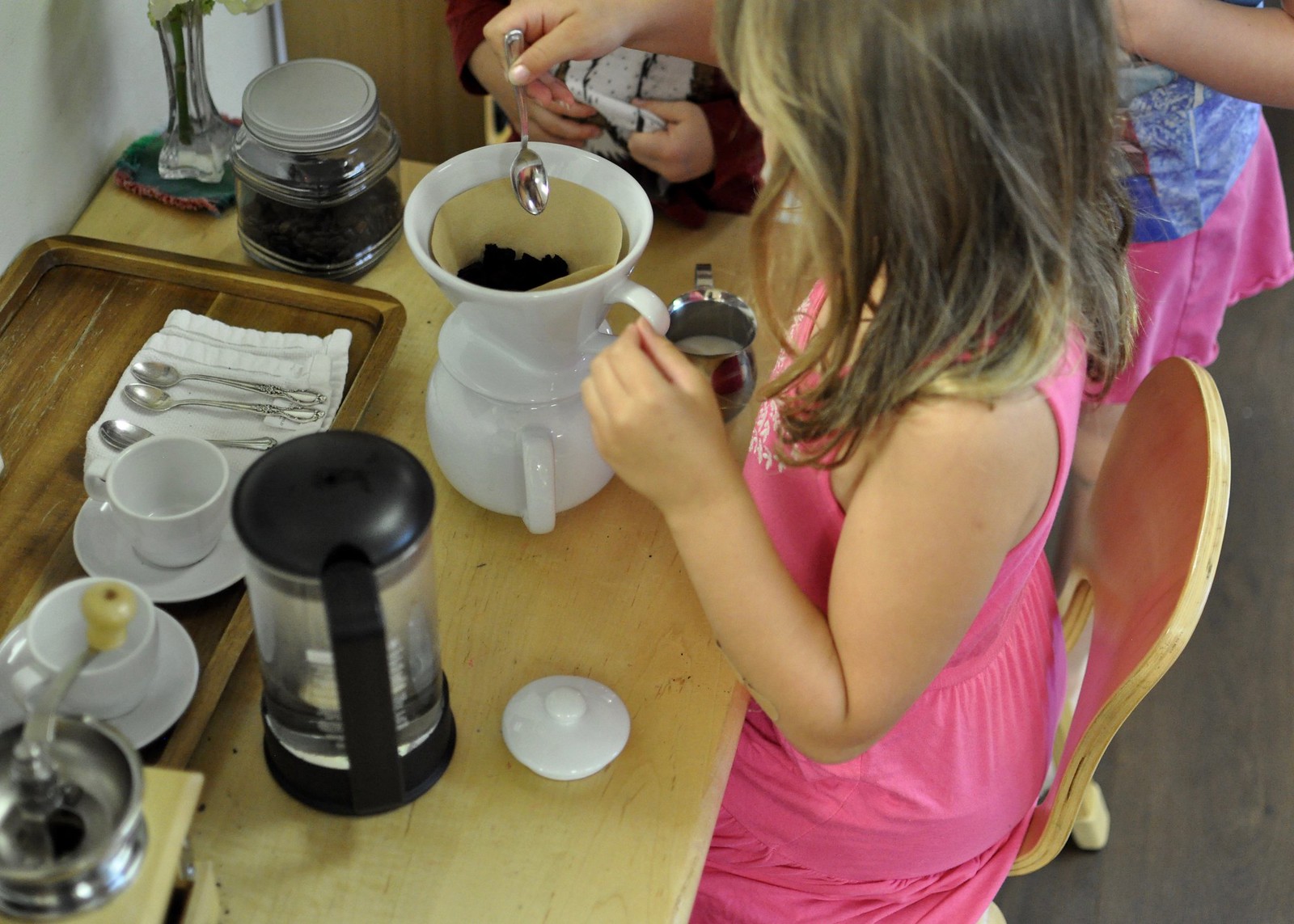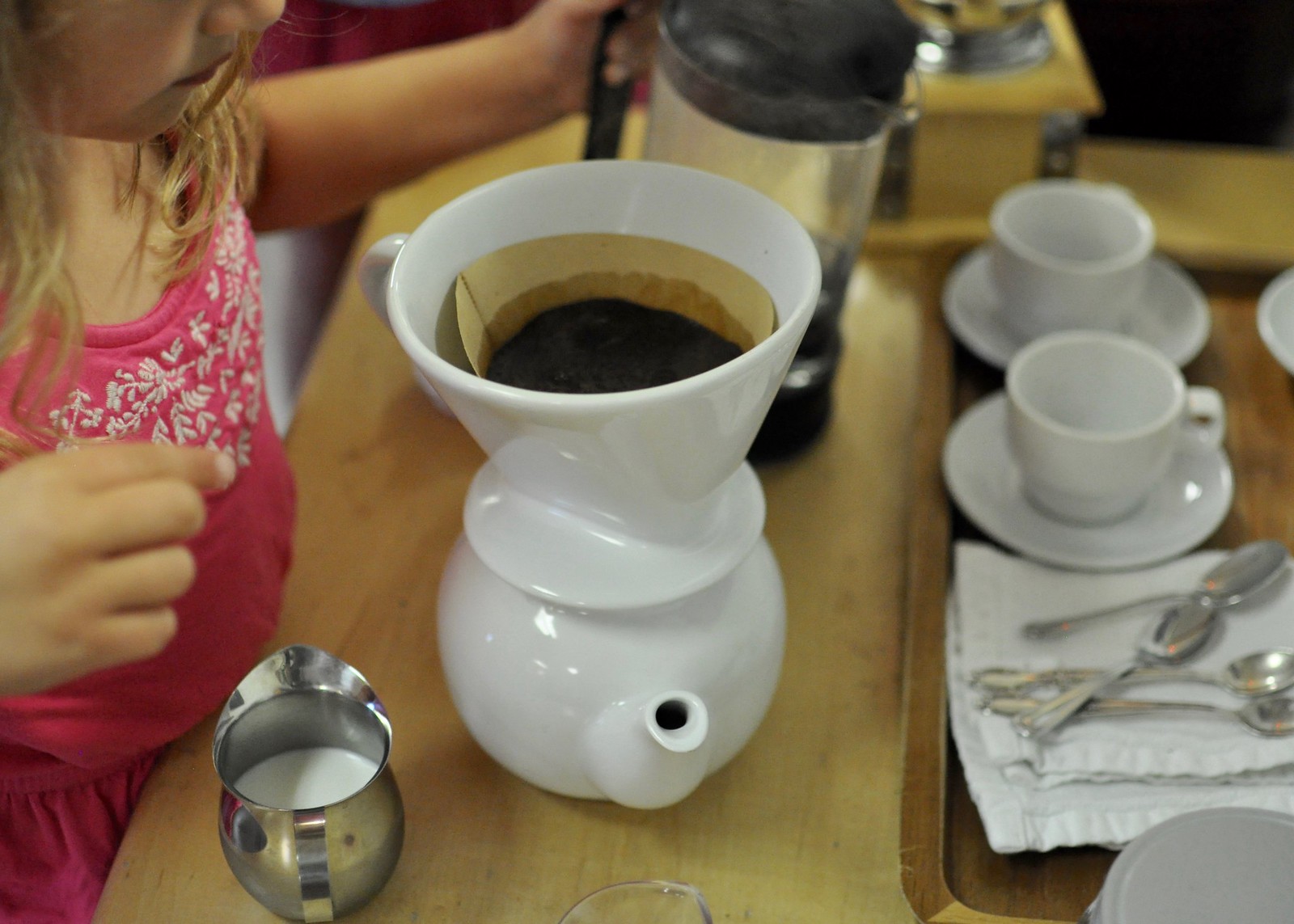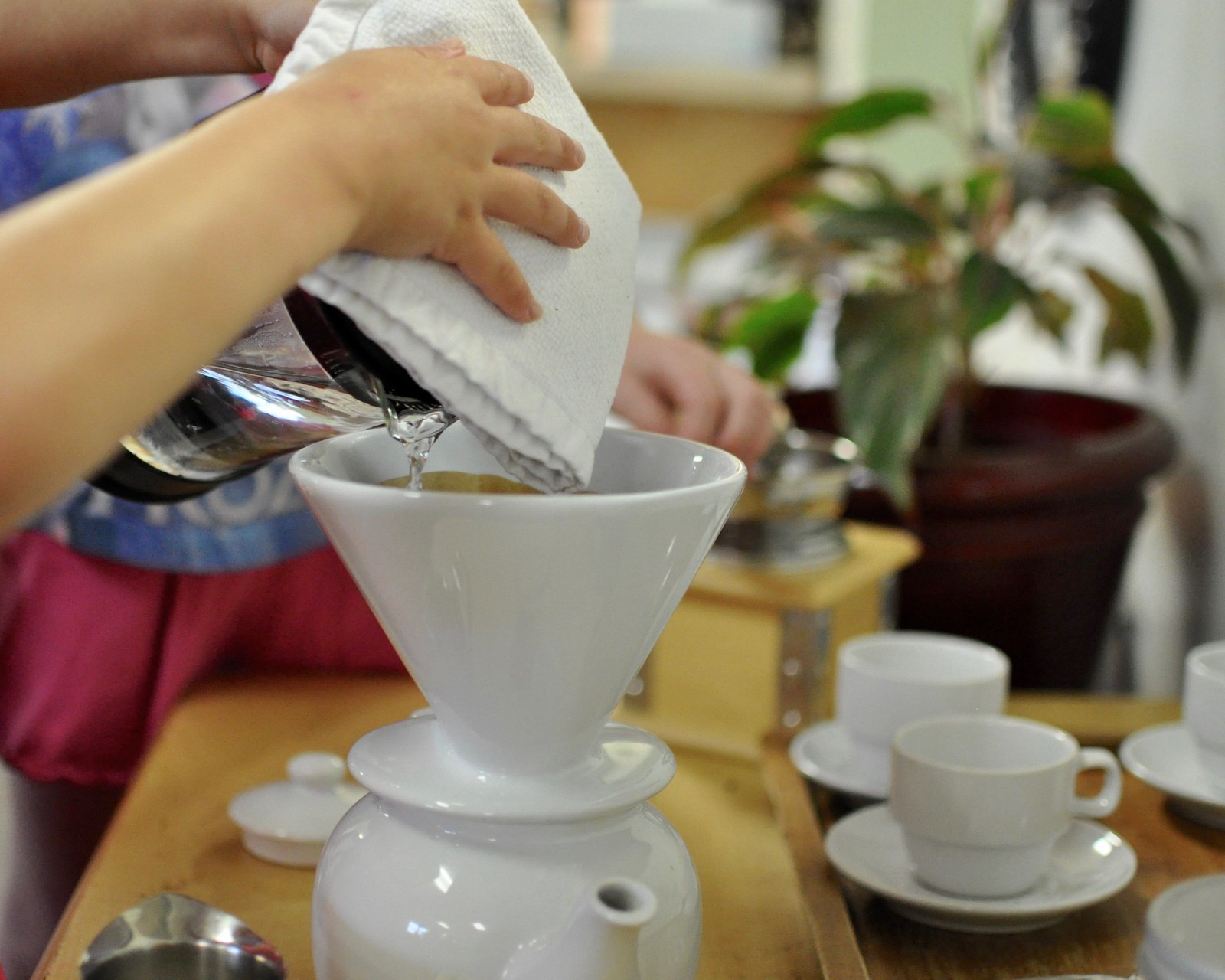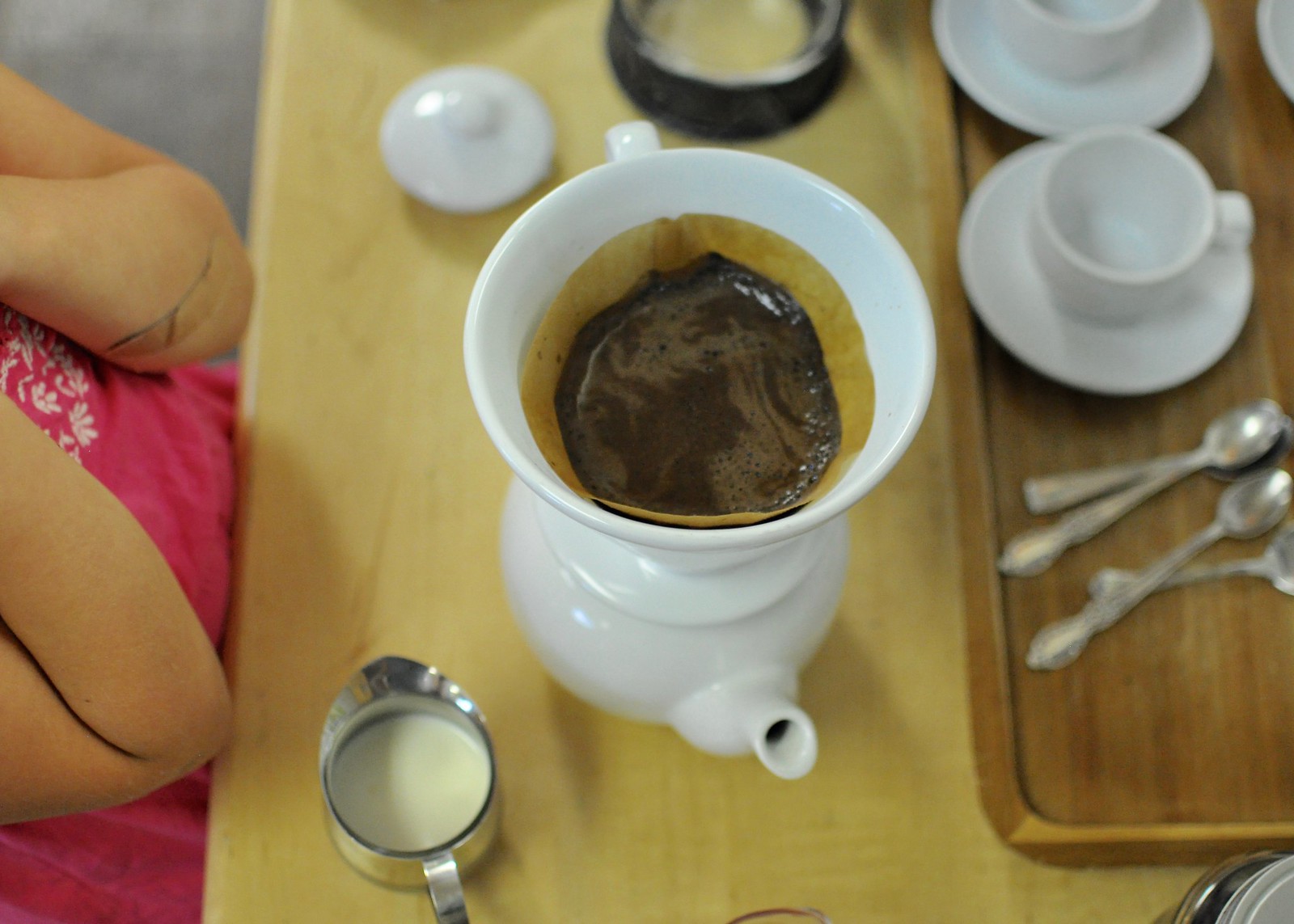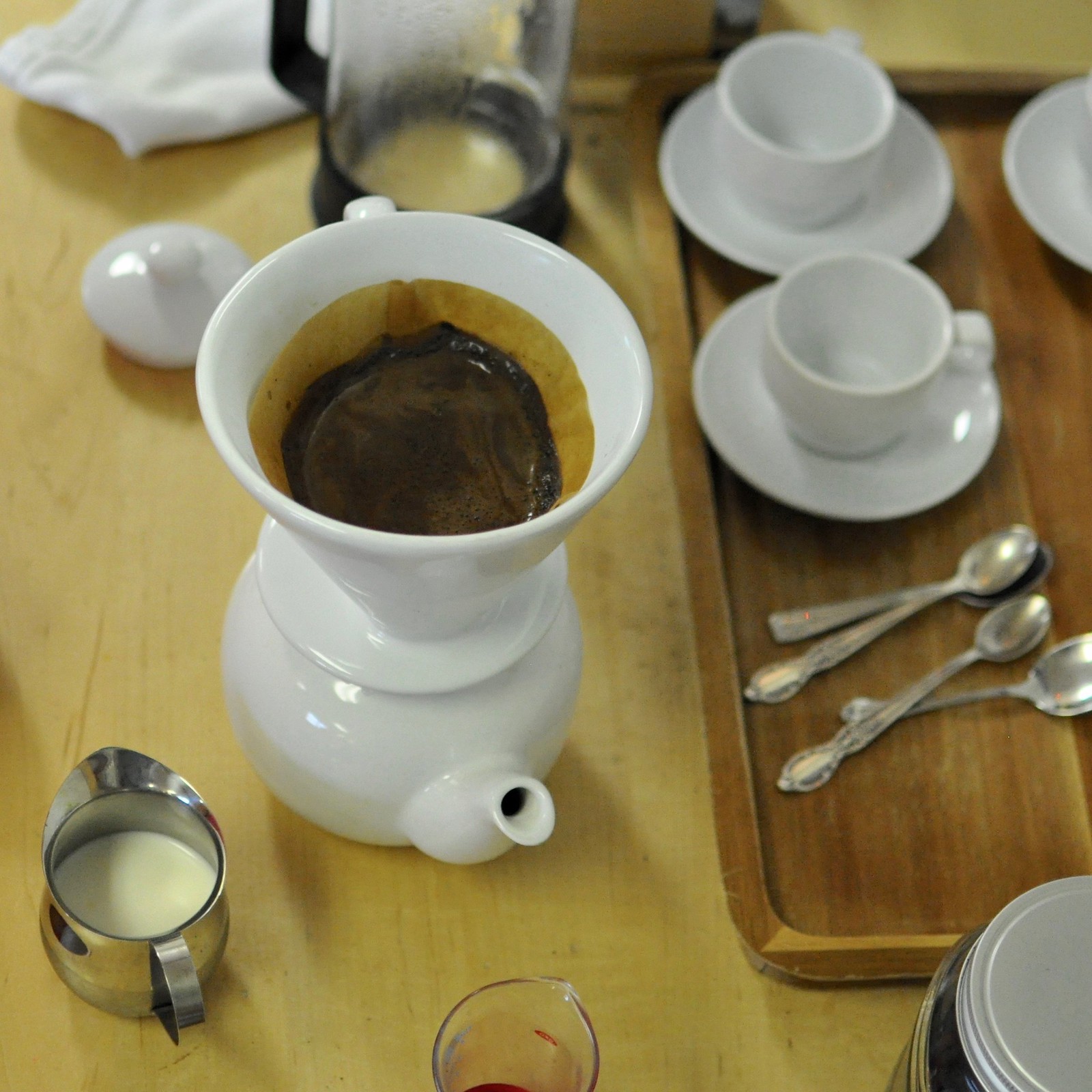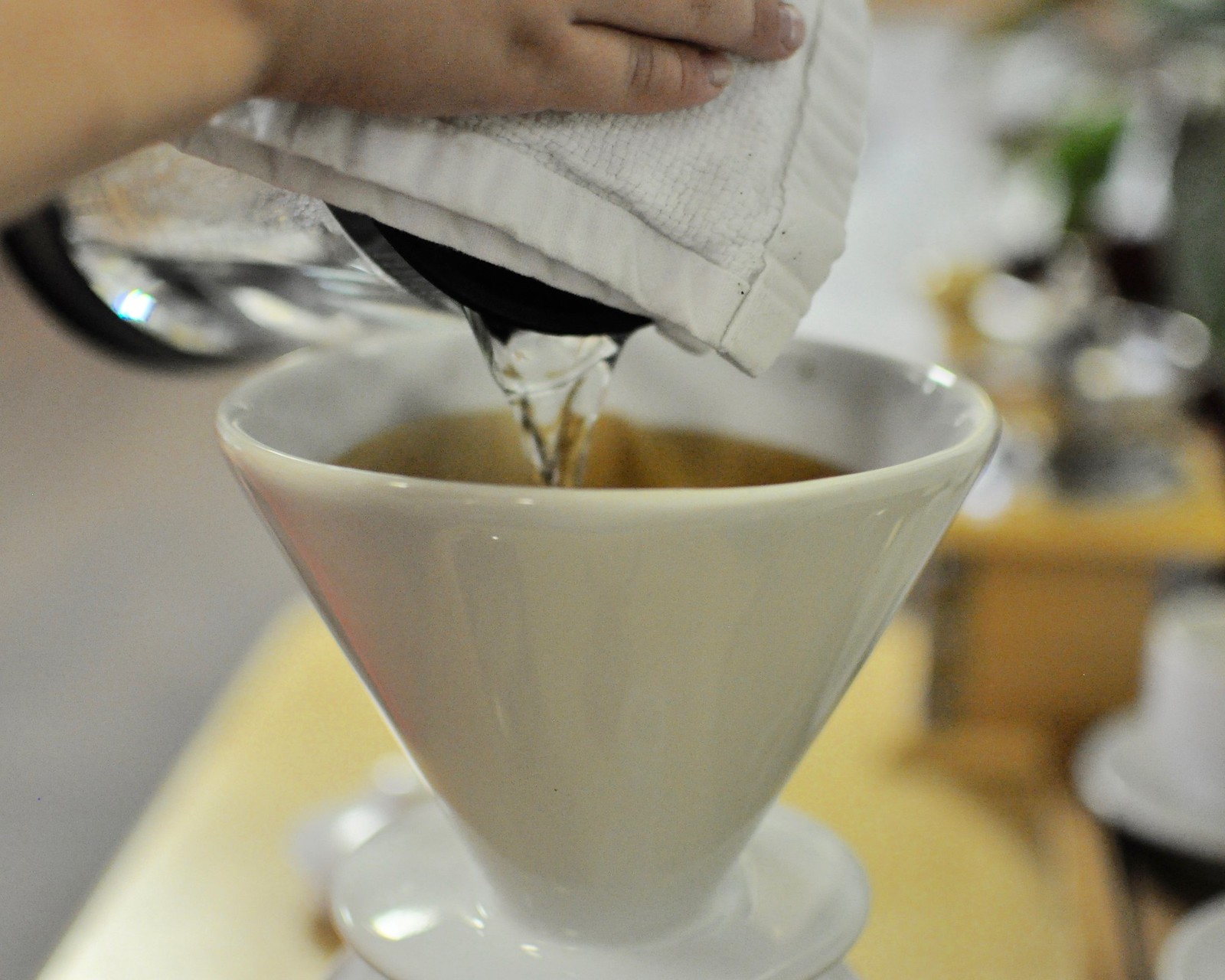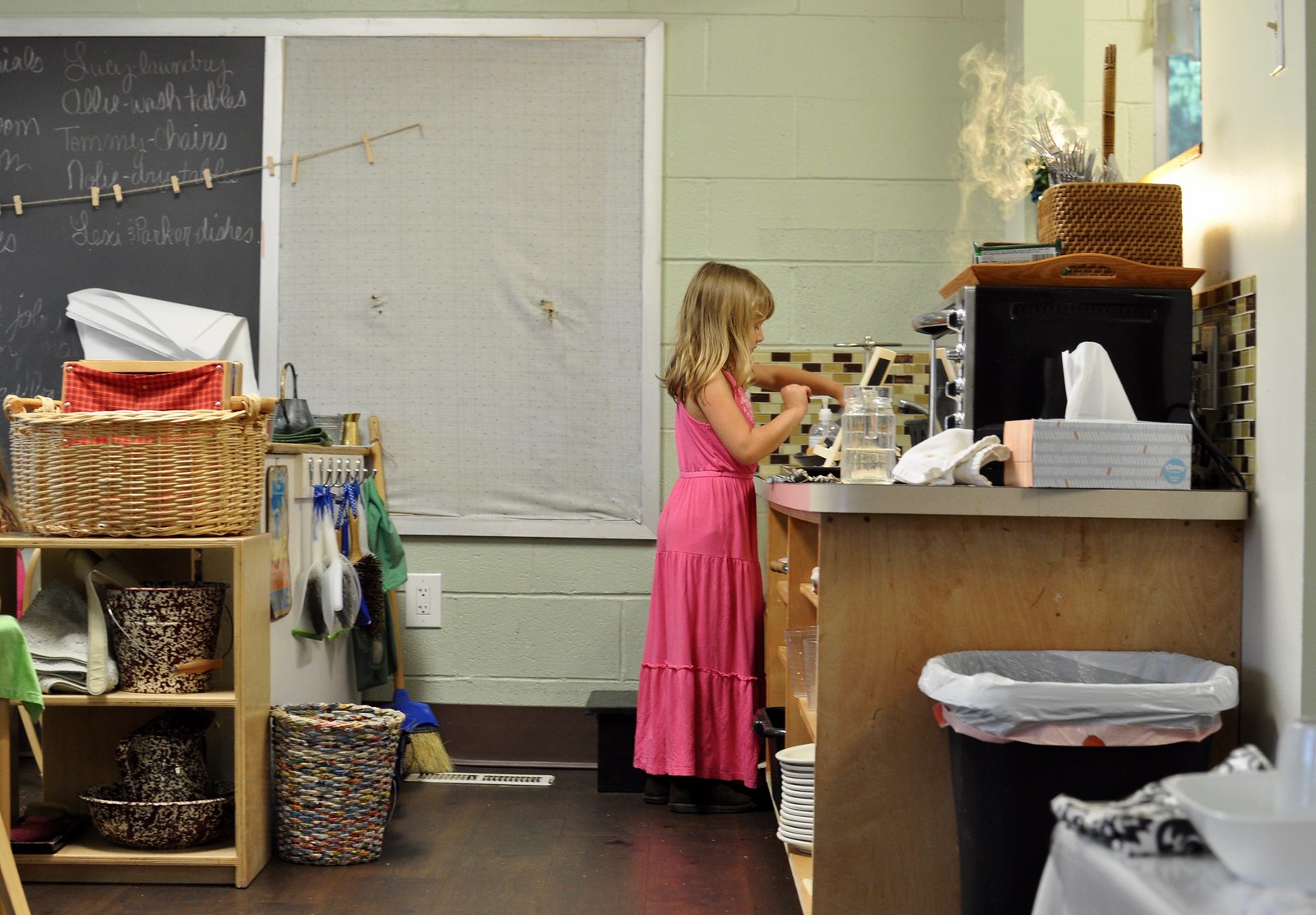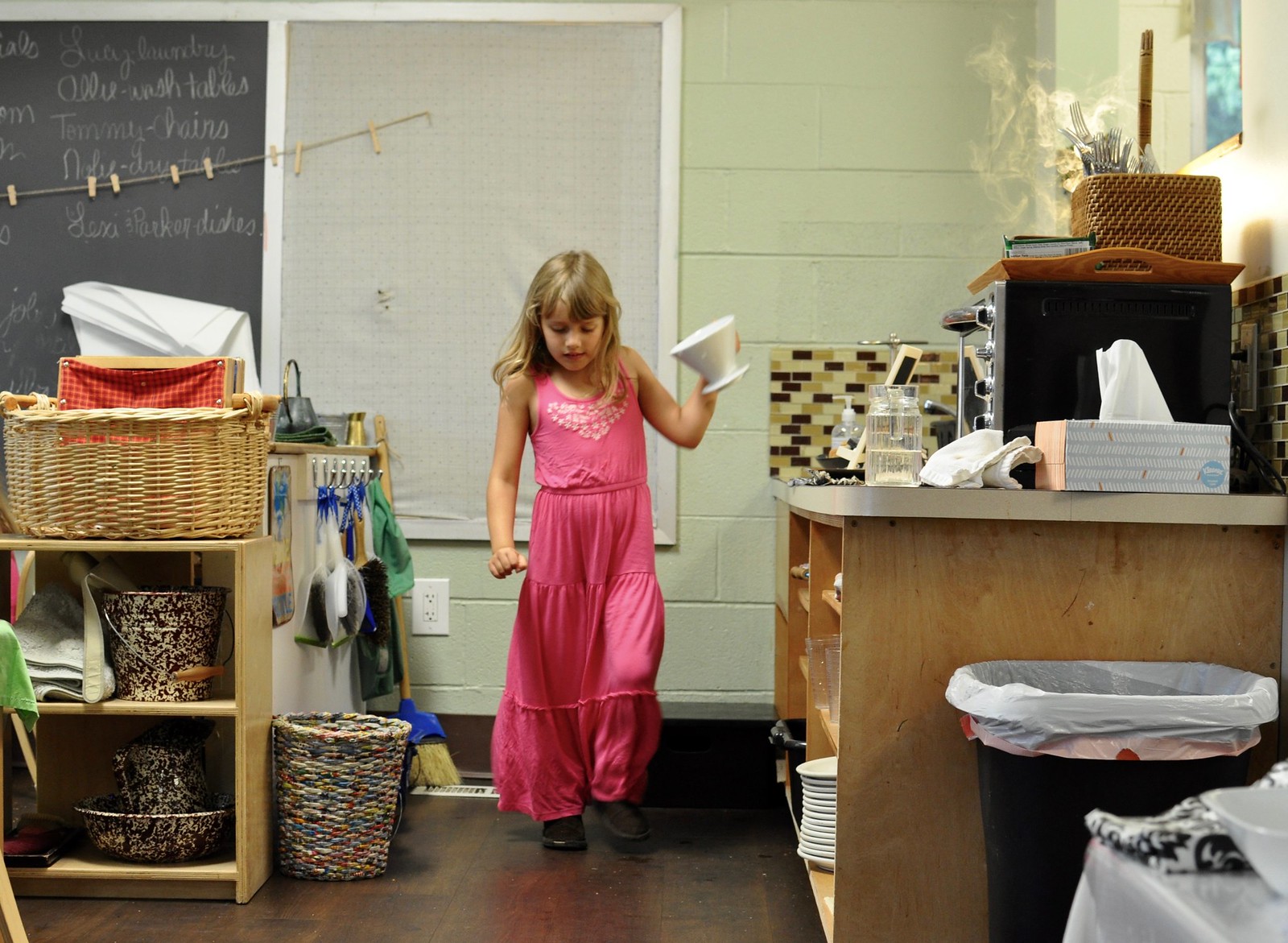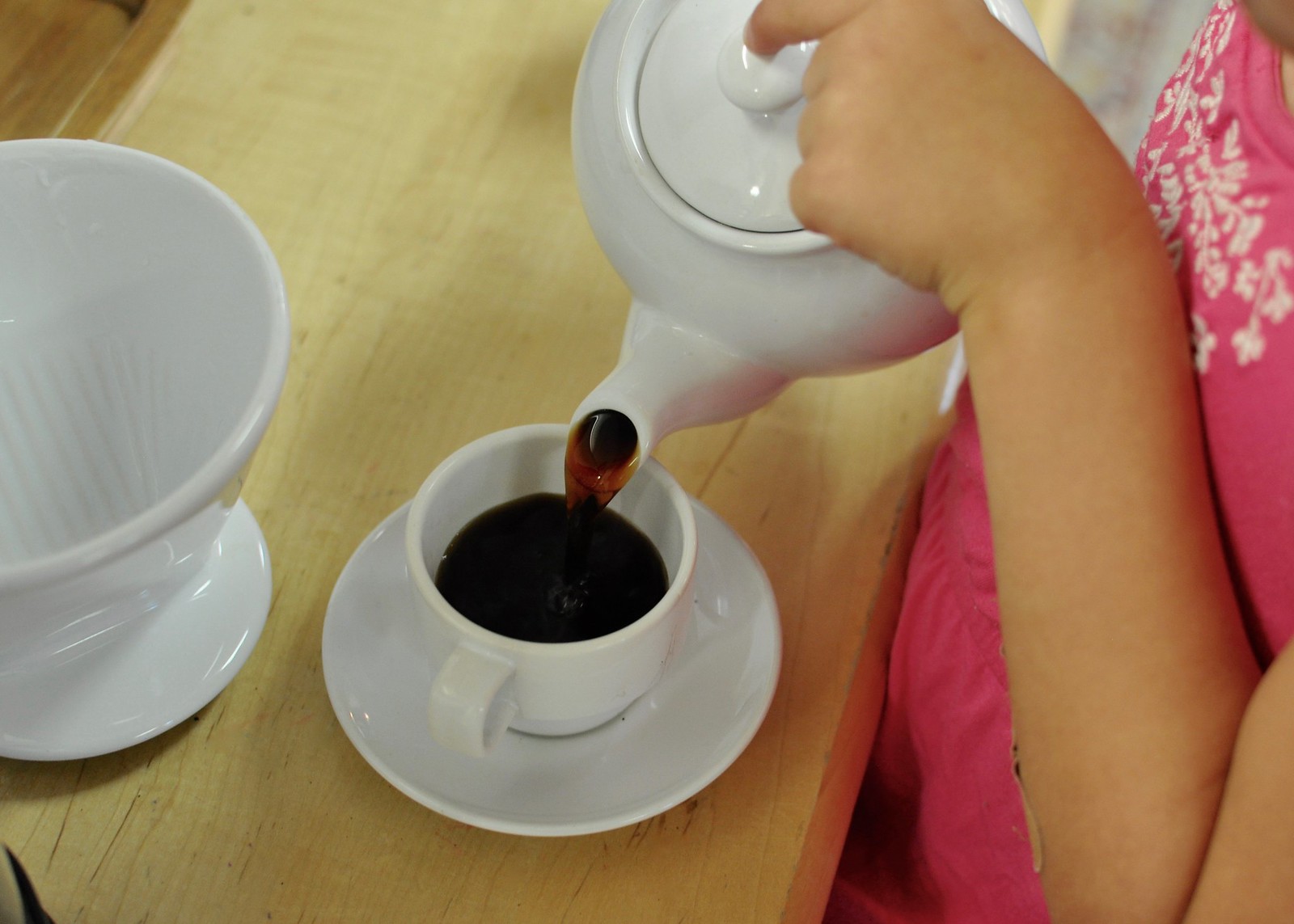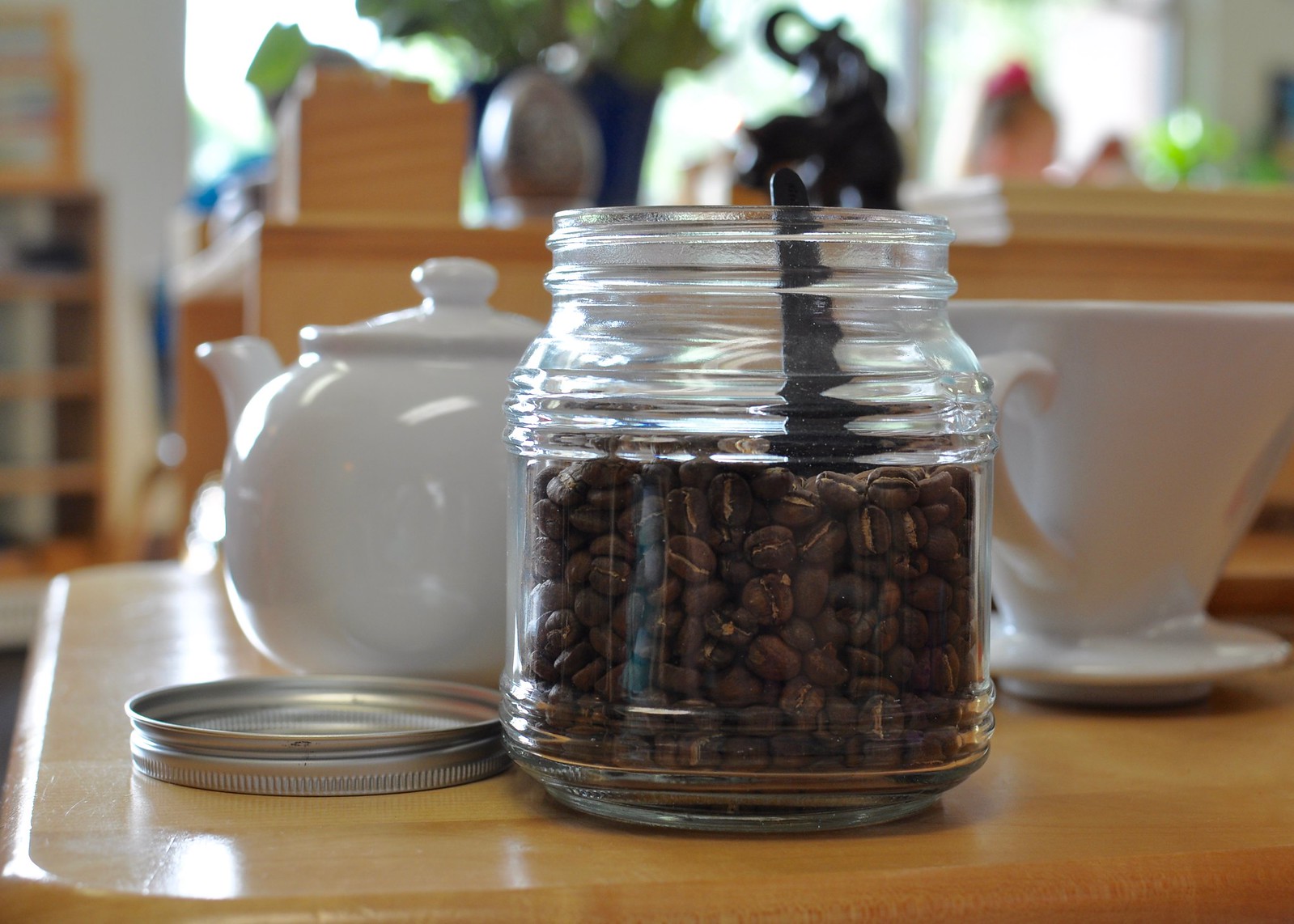 This year's Spring Concert was a fantastic production! Every year, parents are treated to songs, dance, music, and drama from the smallest children on up to the sixth-year graduating class. It is always such a treat, and this production was no exception.
This year's Spring Concert was a fantastic production! Every year, parents are treated to songs, dance, music, and drama from the smallest children on up to the sixth-year graduating class. It is always such a treat, and this production was no exception.  The Primary students gathered with their specific classes just before the show, all dressed up in their finest spring attire!
The Primary students gathered with their specific classes just before the show, all dressed up in their finest spring attire!
 The Lower and Upper Elementary children and staff met in separate classrooms to prepare for their performances. Here, the Lower Elementary children put on costumes chosen by the "costume crew" in the weeks leading up to the show. All preparations, including set design, costumes, dialogue, music, (and in the case of the Upper Elementary, lyric research and memorization and dance choreography) was conducted from start to finish by the students themselves.
The Lower and Upper Elementary children and staff met in separate classrooms to prepare for their performances. Here, the Lower Elementary children put on costumes chosen by the "costume crew" in the weeks leading up to the show. All preparations, including set design, costumes, dialogue, music, (and in the case of the Upper Elementary, lyric research and memorization and dance choreography) was conducted from start to finish by the students themselves.




Suspender application

Success!



Waiting so very patiently!
 The Extended Day Primary students started the show with the Proclaimers' 500 Miles; Count on Me, by Bruno Mars; and The Way I Am, by Ingrid Michaelson. The rest of Primary joined in to sing This is My School, What's a Friend For?, Simple Gifts, Everyone Makes Mistakes, It's a Small World, and I'd Like to Teach the World to Sing. Nathan Jatcko accompanied the children on piano.
The Extended Day Primary students started the show with the Proclaimers' 500 Miles; Count on Me, by Bruno Mars; and The Way I Am, by Ingrid Michaelson. The rest of Primary joined in to sing This is My School, What's a Friend For?, Simple Gifts, Everyone Makes Mistakes, It's a Small World, and I'd Like to Teach the World to Sing. Nathan Jatcko accompanied the children on piano.
A necessary piece of keeping it all together? The Directresses and Guides on the sidelines, who deserve a big round of applause for their behind-the-scenes work on helping the children memorize all the lyrics to these songs!
Next up, the Lower Elementary, who put on a play about the Titanic, which covered class differences, dancing, a bit of history, and plenty of humor (also, dancing! There was dancing!):




 And last but not least, the Upper Elementary, who presented on the graduating class, adding personal touches for each of the nine graduates:
And last but not least, the Upper Elementary, who presented on the graduating class, adding personal touches for each of the nine graduates:


 Some of the sixth-years got the audience moving (and laughing) with their rendition of Weird Al Yankovic's "Word Crimes," a parody of the 2013 single "Blurred Lines" by Robin Thicke. The song spoofs misuse of proper English grammar and usage.
Some of the sixth-years got the audience moving (and laughing) with their rendition of Weird Al Yankovic's "Word Crimes," a parody of the 2013 single "Blurred Lines" by Robin Thicke. The song spoofs misuse of proper English grammar and usage.
 The Upper Elementary also performed Medley of Farmer Refuted and You'll be Back, I've Been Everywhere, and Four Chords. Luke, Ben, Seth, Matthew, Liam, Daisy, Dominic, Emily, Marguerite, and Bella also did percussion throughout the performances, while Ben also did bass; Kamryn, Cameron, Katelyn, Elle, and Chase played piano; Joe and Ella played guitar; Klaus, Julia, and Kaylee played violin; and Lia played flute. What a musical group of kids!
The Upper Elementary also performed Medley of Farmer Refuted and You'll be Back, I've Been Everywhere, and Four Chords. Luke, Ben, Seth, Matthew, Liam, Daisy, Dominic, Emily, Marguerite, and Bella also did percussion throughout the performances, while Ben also did bass; Kamryn, Cameron, Katelyn, Elle, and Chase played piano; Joe and Ella played guitar; Klaus, Julia, and Kaylee played violin; and Lia played flute. What a musical group of kids!

 The whole show was a memorable, fantastic, tear-jerker of a night. Thank you to all the students and staff who made it all come together!
The whole show was a memorable, fantastic, tear-jerker of a night. Thank you to all the students and staff who made it all come together!
 With summer in full swing, the students and staff at Villa di Maria are up to all sorts of adventures! We're peeking in on some of our families to see what they've been up to. Today, Upper Elementary Directress Rebecca Callander shares what her son Winston has been up to (hint: it involves sticky fingers and small victories).
With summer in full swing, the students and staff at Villa di Maria are up to all sorts of adventures! We're peeking in on some of our families to see what they've been up to. Today, Upper Elementary Directress Rebecca Callander shares what her son Winston has been up to (hint: it involves sticky fingers and small victories). Rebecca is full of good ideas, like the violet jelly she encouraged her students to make earlier this spring! Her son Winston has clearly inherited the make-it gene. He came up with the idea for jam buns and planned, prepped, and executed most of the task on his own!
Rebecca is full of good ideas, like the violet jelly she encouraged her students to make earlier this spring! Her son Winston has clearly inherited the make-it gene. He came up with the idea for jam buns and planned, prepped, and executed most of the task on his own! He made good use of his family's raspberry-blackberry jam (homemade, of course).
He made good use of his family's raspberry-blackberry jam (homemade, of course). The recipe came from Julia Turshen's cookbook, Small Victories. Look at these beautiful photos from the book!
The recipe came from Julia Turshen's cookbook, Small Victories. Look at these beautiful photos from the book!


 You can listen to an interview with author Julia Turshen, who talks about taking some of the stress out of home cooking, here on NPR. Thank you, Rebecca and Winston, for sharing a piece of your summer with us!
You can listen to an interview with author Julia Turshen, who talks about taking some of the stress out of home cooking, here on NPR. Thank you, Rebecca and Winston, for sharing a piece of your summer with us!


















































































